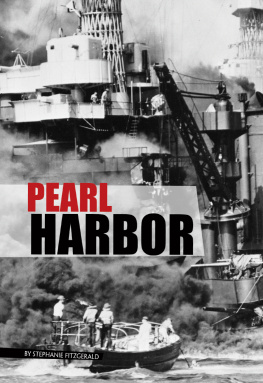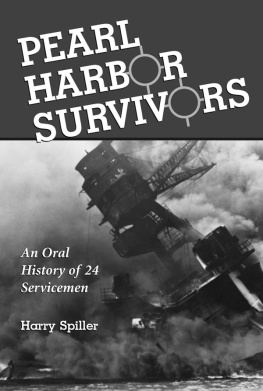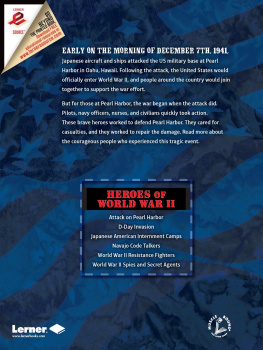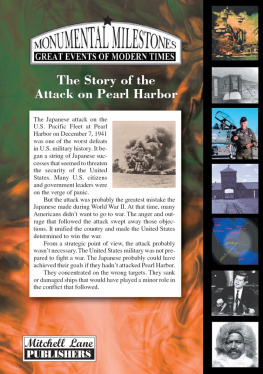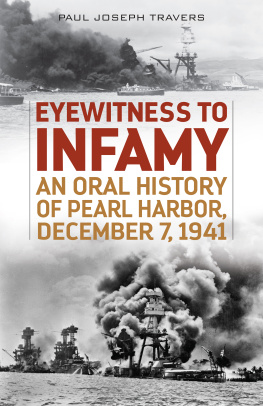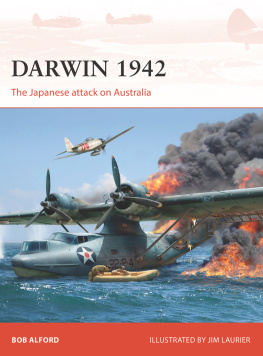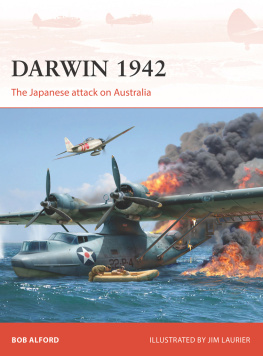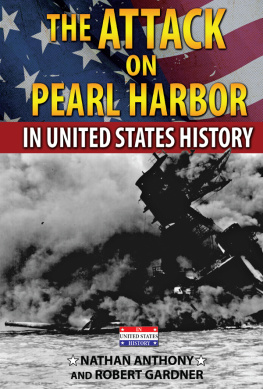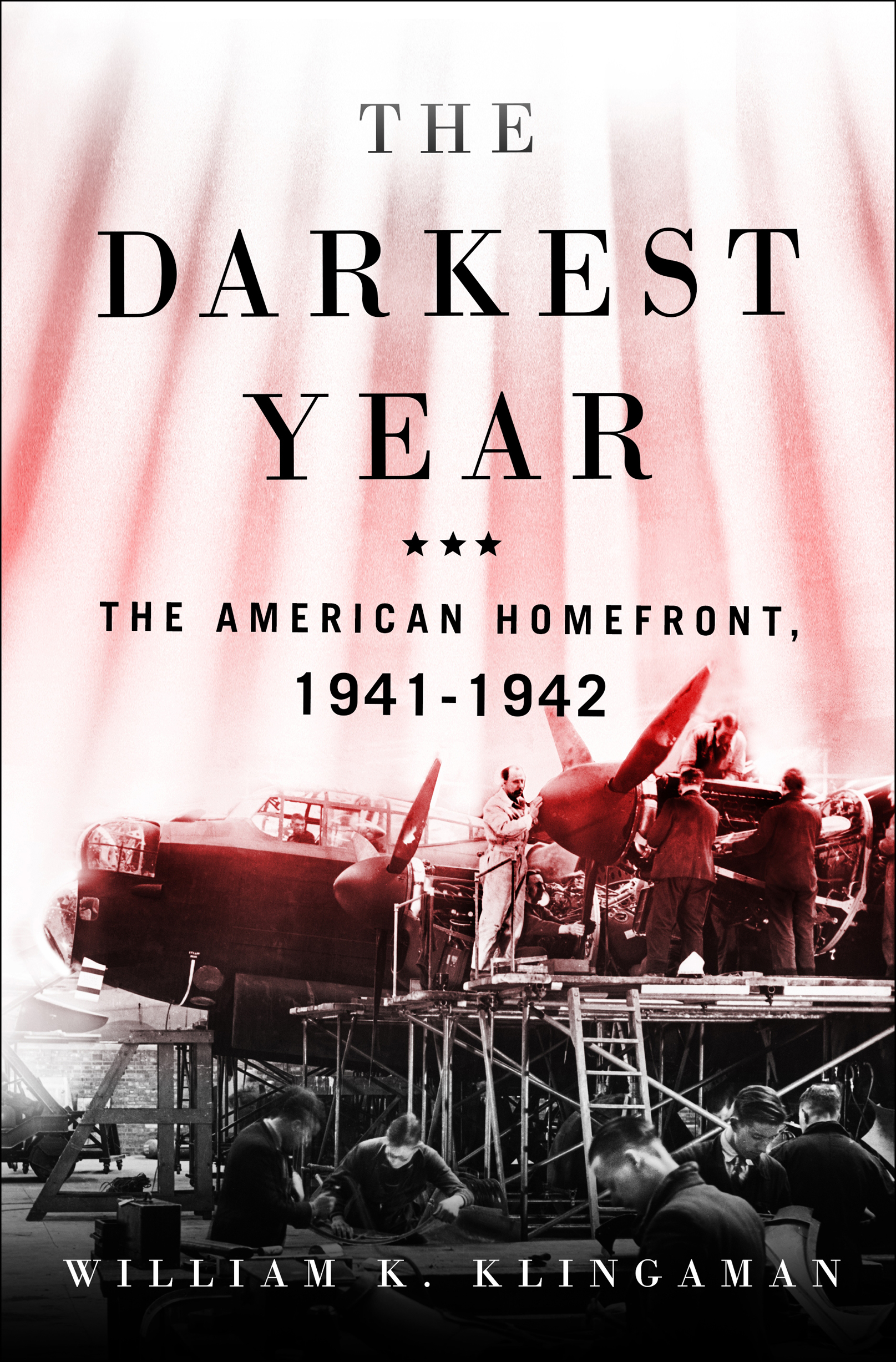The author and publisher have provided this e-book to you for your personal use only. You may not make this e-book publicly available in any way. Copyright infringement is against the law. If you believe the copy of this e-book you are reading infringes on the authors copyright, please notify the publisher at: us.macmillanusa.com/piracy.
When Americans retired for the evening on December 6, 1941, they were looking forward to a glittering holiday season, with their pockets full of cash and department stores filled with a wealth of material comforts. Although they could see the war drifting toward them from a distance, it seemed to still be a long way off. A day later, they were thrust into a conflict for which the nation was painfully unprepared.
The twelve months that followed would be, by any measure, one of the toughest years in American history. In the Pacific theater, American military forces suffered a string of setbacks that included the loss of Wake Island, Corregidor, and the Bataan Peninsula, and a devastating naval defeat in the Java Sea. Off the Atlantic coast, German U-boats sank hundreds of American and Allied merchant ships, sometimes in full view of onlookers on eastern beaches. By the autumn of 1942, both civilian and military officials were openly acknowledging the possibility that the United States might lose the war.
On the home front, Americans did not lay aside their differences and join together in the war effort, cheerfully making whatever sacrifices the government requested. Instead, a society that was already deeply divided before the Japanese attack on Pearl Harbor splintered further as numerous interest groups sought to turn the wartime emergency to their own advantage. Blunders and repeated displays of ineptitude by the Roosevelt administrationat a time when the federal government was exercising unprecedented power over its citizensadded to the sense of anxiety and uncertainty that hung over the nation.
Goods vanished from their familiar places in American life: gasoline, rubber, sugar, coffee, and nearly anything made of metal. Heavy-handed censorship hid discouraging war news from the people, or deliberately misled them into believing the military situation was less desperate than it was. Civilian defense drills demonstrated that neither federal, state, nor local governments could protect their people; fears of sabotage led to the wholesale internment of American Japanese. Perhaps most disturbing was the disappearance of people, especially sons and husbands who entered military servicewhose families could never be certain, at any given time, whether they were still alive.
This book attempts to study the psychological effects of total war on the American people, focusing on the publics state of mind as revealed not only in what Americans said, but in the day-to-day details of their behavior. It is based almost exclusively on contemporary sources, especially newspapers, magazines, diaries, letters, journals, and essays. Given the well-demonstrated unreliability of human memory, particularly regarding events which occurred years or even decades earlier, I have treated oral histories and memoirs with caution. There are, however, a number of excellent secondary sources which proved invaluable in providing both a sense of perspective and exemplary analyses of the period. In particular, I should like to acknowledge David Kennedys The American People in World War II; Richard Polenbergs study War and Society: The United States, 19411945; Lynne Olsons narrative of the election of 1940, Those Angry Days; and Richard Reeves (Infamy) and Greg Robinson (By Order of the President) on the Roosevelt administrations decision to intern Japanese Americans. If I have shortchanged specific aspects of the home front experienceI am well aware, for instance, that I could have written far more on race relations during this periodit is because those topics more properly belong in a study of the American home front in the later years of the war.
We were slipping swiftly down the
shelf of time into another era in
the soft fall days of 1941, but we
had little or no awareness of it.
MARQUIS CHILDS
Christmas 1941 was shaping up to be the most delightful holiday season Americans had enjoyed in a long time. After more than a decade, the economy was finally emerging from the Great Depression, a recovery fueled by the Roosevelt administrations rapid expansion of defense spending over the past eighteen months. Hard times vanished in munitions factories, shipyards, and aircraft plants. Americans had never had so much money to spend in their lives.
In the first week of December, department store owners expected the biggest Christmas rush in United States history, and so they greeted customers with display windows filled with a dazzling array of gift ideas. Fur coats seemed to be everywhere: Russian ermine, Japanese mink, blended sable capes, and silver fox jackets. (A good long-term investment, no matter how you look at it, chirped one ad. Shell love it!) There were silk dinner pajamas, and waist-length ostrich capes with crepe linings; womens blouses covered with sequins, and nightgowns with tiny embroidered rabbits riding bicycles down the front. Masses of glitter were stuck to everything from V-neck jackets to black crepe evening dresses.
Wise men purchased at least several pairs of hosiery for their wives and girlfriendsa sudden war scare with Japan over the summer had provoked panic buying of stockings, and merchants warned that they were facing the vanishing last few yards of silk. Jewelry with oversize semiprecious stones was in fashion, along with watches of red gold and, for those on a budget, silver bangle bracelets with animal charms. Chanel announced it was still possible to buy its famous perfume, although stocks were starting to run low now that the German army had occupied Paris. Another option came from Russiaa new perfume that came in a bottle shaped like a tank, with turrets and all. To ease the anxieties of gentlemen whose knees buckled at the prospect of buying gifts of intimate apparel for women, one store on Fifth Avenue in Manhattan hosted a stag party, where two dozen young models demonstrated how negligees, lingerie, furs, and jewels might look (more or less) on their customers sweethearts; more than a thousand appreciative men attended.
Perhaps it was time to replace the family radio with a new set capable of receiving one of the new frequency-modulation stations that provided high-fidelity, static-free programs. A year earlier, there had been no FM radio stations in the United States; by December 1941 there were twenty-two. RCA Victor offered a combination radio-phonograph with a Magic Brain that automatically played records on both sides without turning them over, a useful feature if one was listening to the recently released three-disc performance of Ronald Colman as Ebenezer Scrooge in Dickenss A Christmas Carol. (Though one might think Colman was miscast, reported Newsweek, he performs nobly.) RCA apologized to its customers, however, for the shortage of new sets on store shelves; as the government increasingly allocated raw materials for defense needs, the company was forced to cut back production of civilian goods.


